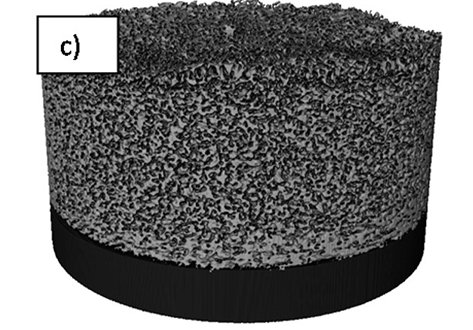Visualizing the Carbon Binder Phase of Battery Electrodes in Three Dimensions

This study presents a technique to directly characterize the carbon and binder domain (CBD) in lithium-ion (Li-ion) battery electrodes in three dimensions and use it to determine the effective transport properties of a LiNi0.33Mn0.33Co0.33O2 (NMC) electrode. X-ray nanocomputed tomography (nano-CT) is used to image an electrode composed solely of carbon and binder, whereas focused ion beam–scanning electron microscopy is used to analyze cross-sections of a NMC electrode to gain morphological information regarding the electrode and CBD porosity. Combining the information gathered from these techniques reduces the uncertainty inherent in segmenting the nano-CT CBD data set and enables effective diffusivity of its porous network to be determined. X-ray microcomputed tomography (micro-CT) is then used to collect a NMC data set that is subsequently segmented into three phases, comprised of active material, pore, and CBD. The effective diffusivity calculated for the nano-CT data set is incorporated for the CBD present in the micro-CT data set to estimate the ensemble tortuosity factor for the NMC electrode. The tortuosity factor greatly increases when compared to the same data set segmented without considering the CBD. The porous network of the NMC electrode is studied with a continuous pore size distribution approach that highlights median radii of 180 nm and 1 μm for the CBD and NMC pores, respectively, and with a pore throat size distribution calculation that highlights median equivalent radii of 350 and 700 nm.